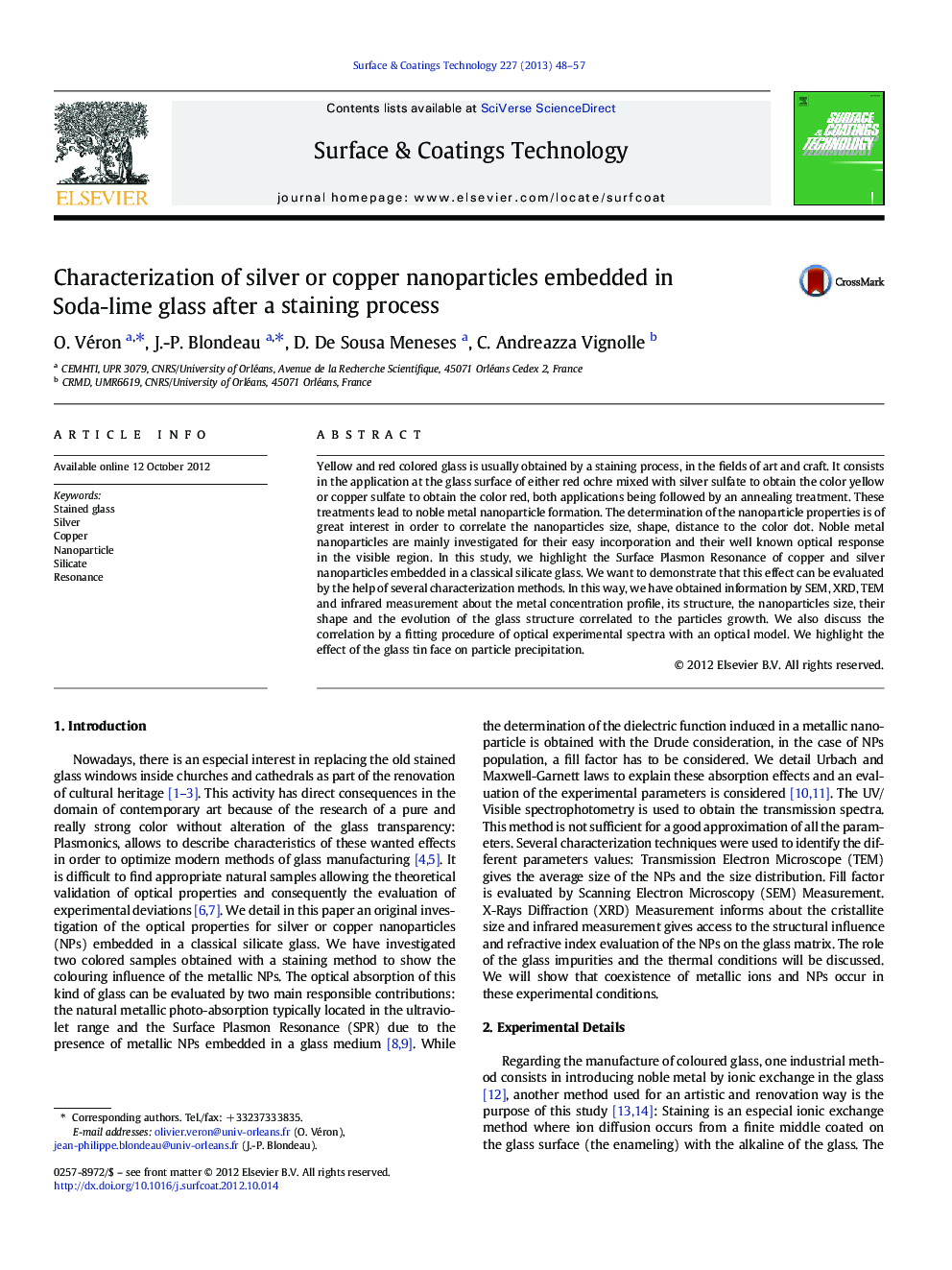| Article ID | Journal | Published Year | Pages | File Type |
|---|---|---|---|---|
| 1658049 | Surface and Coatings Technology | 2013 | 10 Pages |
Yellow and red colored glass is usually obtained by a staining process, in the fields of art and craft. It consists in the application at the glass surface of either red ochre mixed with silver sulfate to obtain the color yellow or copper sulfate to obtain the color red, both applications being followed by an annealing treatment. These treatments lead to noble metal nanoparticle formation. The determination of the nanoparticle properties is of great interest in order to correlate the nanoparticles size, shape, distance to the color dot. Noble metal nanoparticles are mainly investigated for their easy incorporation and their well known optical response in the visible region. In this study, we highlight the Surface Plasmon Resonance of copper and silver nanoparticles embedded in a classical silicate glass. We want to demonstrate that this effect can be evaluated by the help of several characterization methods. In this way, we have obtained information by SEM, XRD, TEM and infrared measurement about the metal concentration profile, its structure, the nanoparticles size, their shape and the evolution of the glass structure correlated to the particles growth. We also discuss the correlation by a fitting procedure of optical experimental spectra with an optical model. We highlight the effect of the glass tin face on particle precipitation.
► We highlight the nanoparticles parameters responsible of the stained glass color. ► We propose a theoretical approach for the optical absorption. ► We show that nanoparticles are consisted of a core-shell system. ► We suggest an oxidizing of the nanoparticles surface. ► We show the silicate network depolymerization of the glass surface.
